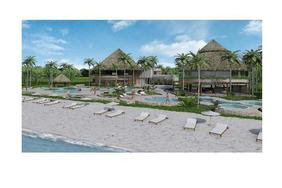Richard C. Morais 05.05.08, 12:00 AM ET
Who needs Liechtenstein or the isle of Jersey? We've got a lovely tax haven right in this hemisphere
...
Meantime, even as the U.S. pulled up its drawbridge to many foreigners after the Sept. 11 attacks, its dollar was the standard for Panama, which (until lately, at least) has found the currency bulwark an additional attraction for some of those same itinerants.
Result: Panama's GDP has been compounding at 7% these last five years. "Something's happened," says Joseph Harari, director of Panama's Credicorp (nyse: BAP - news - people ) Bank and an executive board member at the Wharton School in Philadelphia. "We've always had very liberal tax laws. But we also use the U.S. dollar to run our economy. It all helped."
Panama's corporate tax rate is 30% and is levied on local income only. The U.S.' 35% federal corporate tax burden is, in contrast, the second highest in the world and is applied to global income. Caterpillar (nyse: CAT - news - people ), Procter & Gamble (nyse: PG - news - people ) and Hewlett-Packard (nyse: HPQ - news - people ) have all recently announced significant investments in Panama. The personal income tax, capped at 27%, is also limited; the De Beaulieus, for example, don't pay Panamanian taxes on their French investments, which face high levies at home.
According to one report 35 towers of over 20 floors are in construction. Besides the danger of overbuilding, there are stress signs of too-rapid growth: brownouts from an overtaxed electricity grid, a Third World sewage system under the First World high-rises. Filth is still pumped into the bay. The government says it is working on sewerage improvements.
Of course, the newly arriving affluent also want high culture and good health care. Frank O. Gehry is designing Panama's museum of biodiversity; Hospital Punta Pacifica is the recently opened affiliate of Johns Hopkins Medicine International.
The old Howard U.S. Air Force Base is a 20-minute drive from downtown Panama City. Dotted with ugly barracks, this 3,500-acre property is still oddly elegant, with rolling lawns and hills, reminiscent of an African savanna, interspersed with flowering rain forest. Europe's London & Regional Properties, with partners, recently won the contract for Howard.
The plan, says Dan R. Marcus, an American developer who just arrived to run the project, is to build 12 million square feet of commercial space alongside 20,000 housing units, all woven together in a "holistic way." Houses will be integrated into the lush forest; on hand, everything from fire stations to chic restaurants. A free trade zone grants Howard-based firms generous VAT to income tax breaks.
Backstopping all this glamour and hype are the canal and related ports. Some 14,000 ships a year make their way through the 50-mile link, paying a fee of up to $313,000. In 2006 Panamanians voted to build an additional set of locks, for $5.3 billion, that in 2014 will double capacity and finally allow modern and much larger container ships to pass through.
...
International
America's Loss, Panama's Gain
05.05.08, 12:00 AM ET
Abraham Suchar is a 38-year-old Venezuelan who migrated to the U.S. and made good money in the Los Angeles construction boom of the late 1990s before hitting up against the real estate bust in Florida these last couple of years. Meanwhile, his childhood friend Roberto Molko, who married into a prominent Panamanian family, was down in Central America making a killing flipping apartments.
"Florida is now famous among Latin Americans for little fortunes. You come with a big fortune, and you leave with a little one," says Suchar.
"Two maids and a driver in Panama cost you $1,000 a month," he added. His Danish wife and their daughters have yet to be convinced.
But January was Suchar's first month in Panama full time, and in that month the partners presold $17 million worth of real estate to Venezuelans fleeing Hugo Chávez socialism. Panama has low crime, says Molko; its clients are escaping the "kidnapping, robberies and assaults" routine back home.
The U.S. is losing out, too. Sandra Snyder, an American who has written the hot-selling starter's guide Living in Panama (TanToes SA, 2007), says Sept. 11 has been the excuse for the U.S. government to soak foreigners for $130 to consider a visa application. "Imagine what that means to a middle-class family, with four kids, wanting to take a shopping trip to the U.S. or visit Disney," she says.
So Latin America's arrivistes are bypassing the U.S. and heading instead to balmy Panama, where $5 and a 30-second visa form gets you waved into a country in which nearly all the top boutique brands are waiting for you in the marble-filled MultiPlaza Pacific Mall.
Full text in : http://www.forbes.com/2008/04/20/panama-taxes-monaco-biz-cz_rm_0505panama.html



 Beach resort. Price range: EUR 125,000 to 143,000
Beach resort. Price range: EUR 125,000 to 143,000 






